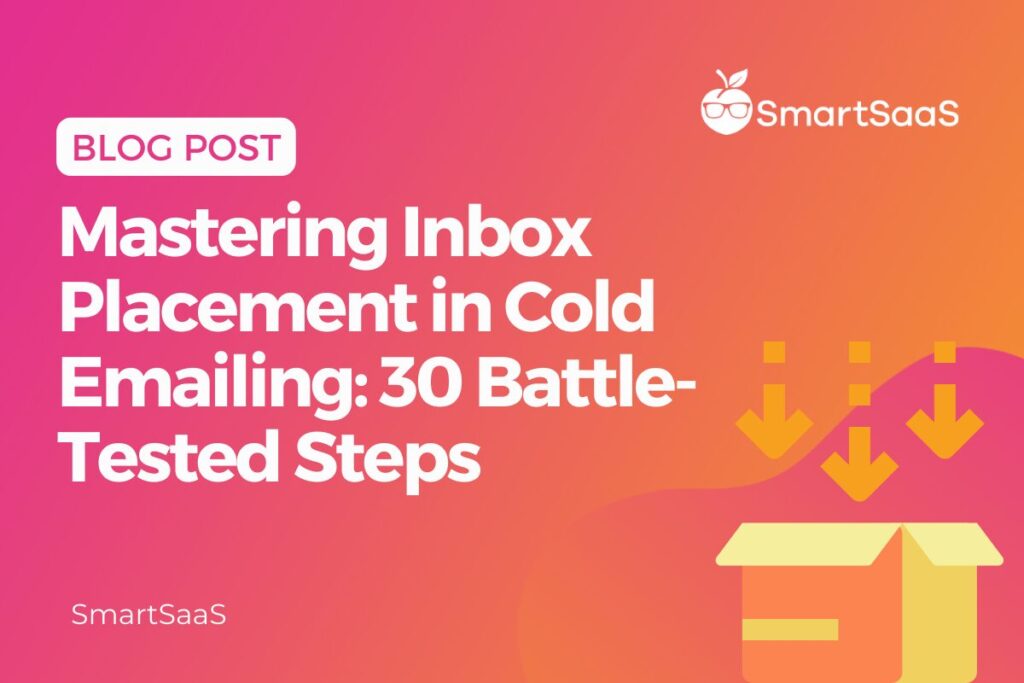Basics of Cold Emailing: The Fundamentals of Cold Email Mastery

Pouring endless hours into refining your value proposition and crafting a sales strategy can be an exercise in futility if you can’t get a meeting with a prospect. From the subject line down to the nuances of your language and tone, each element plays a pivotal role in creating a cold email that works.
Here are the key elements you should focus on when writing a cold email:
Language and Tone
If your aim is to bolster the response rate of your emails, a shift in tone and language is imperative. Trade the conventional, professional sales prospecting questions for an air of uncertainty. For instance, replace the direct “does that fit with what you are looking for” with the more inquisitive “curious if that resonates.”
It’s time to bid farewell to worn-out, insincere expressions such as “I hope this email finds you well” or anything that screams “sales pitch,” like “want to pick your brain.” The objective is to establish a sense of ease and cultivate a personal connection.
Subject Line
Subject lines are critically important in sales prospecting emails. They are the first thing that someone will see on their phone or computer.
Our recommendation is to keep them short and relevant. You want the entire subject line to be readable in preview on a phone or computer. And, avoid duping prospects into opening your email with tricks – it may boost your open rate, but won’t help your reply rate.
Make your subject line compelling enough for your prospect to open and read your email.
Email Framework
Will Allred, co-founder of Lavender Observation, advocates for the following email framework:
- Introduction of yourself and your company.
- Description of the problem your prospect is confronting.
- Presentation of a solution.
- Request for permission to follow up.
- Gratitude for the prospect’s time.
- Closure with a final message.
In your email creation process, bear in mind these tips: maintain a singular focus; be concise yet compelling; employ both active and passive verbs; conclude each sentence with a robust verb; and extend courtesy and respect. By adhering to this straightforward framework, your emails will stand out and resonate with your prospects.
Personalization and Relevance
Personalized emails inject a substantial dose of value into your messages. In a landscape inundated with a deluge of daily emails, many sales pitches become lost in the shuffle, mixed in with the generic email blasts. Investing time in crafting a thoughtful email to capture your prospect’s attention not only forges a connection but also guarantees a higher response rate compared to the repetitive spamming of mass emails.
The path to crafting the perfect cold email may not be one-size-fits-all, but even dedicating a few additional minutes to refine your message can work wonders. Ensuring that your prospect perceives your email as tailored to them safeguards the time you invested in honing your sales strategy from going to waste.
We’ve assembled a set of first email templates to aid you in securing that initial response from your prospect. Scroll down for a preview and click here download all the templates!
The Best First Emails to Send in Sales Templates
1. Pain Point Template (Hunter)
Use this template when you’re pitching your product or service that can aid your prospect in a direct, but not intrusive, way.
Subject line: Can I help with [[pain point]]?
Body:
Hi {{first_name}},
I want to reach out and ask how everything is going at {{company}}? How is your current {{current solution}} working out for you?
We’ve recently added some new features to our software that I believe would be really helpful for [[prospect’s pain point]]. If you would be interested in a quick chat or demo this week, please let me know or if there are any other ways we can help {{company}}.
Best,
2. Solution for Client Challenge Template (Hunter)
Use this template when you want to highlight the problem that your product/ service solves; this allows your prospect to relate to you by being direct and assertive.
Subject line: Solution for [[challenge]]
Body:
Hi {{first_name}},
In working with other [[industry or position]], one of the key issues they’re struggling with is [[key issue]].
This past year we helped numerous companies to [[business driver]], resulting in [[money saved, revenue added, productivity increases]].
If this is something you’re challenged with too, let’s set up a quick call. I have some ideas that might help.
All the best,
[[your name]]
3. Quick Chat About Company Template (Lemlist)
Use this template if you’re looking to sell talent sources via email.
Subject line: Quick chat about {{companyName}}?
Body:
Hey there, {{First Name}},
Don’t have the staff to fill all of the available slots?
I’m not here to waste your time {{firstName}}, so I’ll get straight to it and tell you why I’m interrupting your day.
My name is [your name] and I co-founded [your company] — [your company specialization].
So {{firstName}}, if this is something that interests you, are we able to schedule a quick 20-minute call this week? I would love to discuss the strategy we’re using to bring qualified candidates and find a way to work together.
If your answer is YES then I’ll forward my calendar link to you. If your answer is No then I’ll stop emailing you immediately.
4. Client Company as a Good Fit Template (Klently)
Use this template if you want to convince a brand that working with you is a good choice for them directly and authoritatively.
Subject line: {{First Name}}+{{Your company}} will be a good fit
Body:
Hi {{FirstName}},
I hope this note finds you well.I’ve been working for a company called {{my company}} that specializes in X, Y and Z. In thinking about your role at {{company}}, I thought there might be a good fit for your group.
Our {{product name}} has garnered a lot of attention in the marketplace and I think it’s something that your organization might see immediate value in.Can you help me get in contact with the right decision-maker?
5. Answer to Client Problem Template (Saleshady)
Use this template when you want to highlight the problem that your product/ service solves in a fun and light manner to make your email more approachable rather than intimidating.
Subject line: {First Name}, We have the answer to your problem!
Body:
Hey there {First Name},
Do you feel like you could use a break right about now? As a business professional myself, I can totally resonate with you.
Our [email tracking tool has helped many entrepreneurs] like yourself save a lot of time and stay on top of things! I myself have saved around 5 hours per week by setting up email campaigns with automated personalized follow-ups.
Do you want to save time as well? If you do, then we can set up a demo call.
Regards, {Your Name}






Responses